Mausoleum of Emperor Wu of Han: A Journey into Ancient Chinese Royalty

An Essential Guide to Visiting Mausoleum Of Emperor Wu Of Han Maoling
In This Guide
- An Essential Guide to Visiting Mausoleum Of Emperor Wu Of Han Maoling
- The Rich History and Legends of Mausoleum Of Emperor Wu Of Han Maoling
- Main Highlights: What You Absolutely Can’t Miss
- Planning Your Visit: A Practical Guide
- Tickets: Prices, Booking, and Tips
- How to Get There: A Complete Transportation Guide
- Local Cuisine and Accommodation Nearby
- Frequently Asked Questions
- Final Thoughts on Your Trip
Nestled in the serene countryside just a short drive from the bustling city of Xi’an, the Mausoleum of Emperor Wu of Han, or Maoling (汉武帝茂陵), stands as a monumental testament to one of China’s most influential emperors, Liu Che, known as Emperor Wu. As the seventh emperor of the Han Dynasty, which spanned from 206 BCE to 220 CE, Emperor Wu is celebrated for his military conquests, the expansion of the Silk Road, and significant advancements in philosophy and culture. His mausoleum, set against a backdrop of rolling hills and lush landscapes, offers a rare glimpse into the grandeur of ancient Chinese imperial life.
Visiting Maoling is not merely a stroll through history; it’s an immersive experience that invites travelers to ponder the intricate tapestry of human achievement and the legacies left behind. The site features an expansive complex comprising a museum, various tombs—including those of notable figures such as General Huo Qubing—and enchanting gardens dotted with stone sculptures that narrate tales of valor and loyalty.
As you wander through this historical site, you will be enveloped in stories of the Han Dynasty’s glory days, from the emperor’s strategic brilliance to the poignant saga of his beloved general, who died young yet left an indelible mark on history. This mausoleum, often overlooked in favor of the more famous Terracotta Army, is a treasure trove of cultural significance that deserves a place on every history buff’s itinerary.
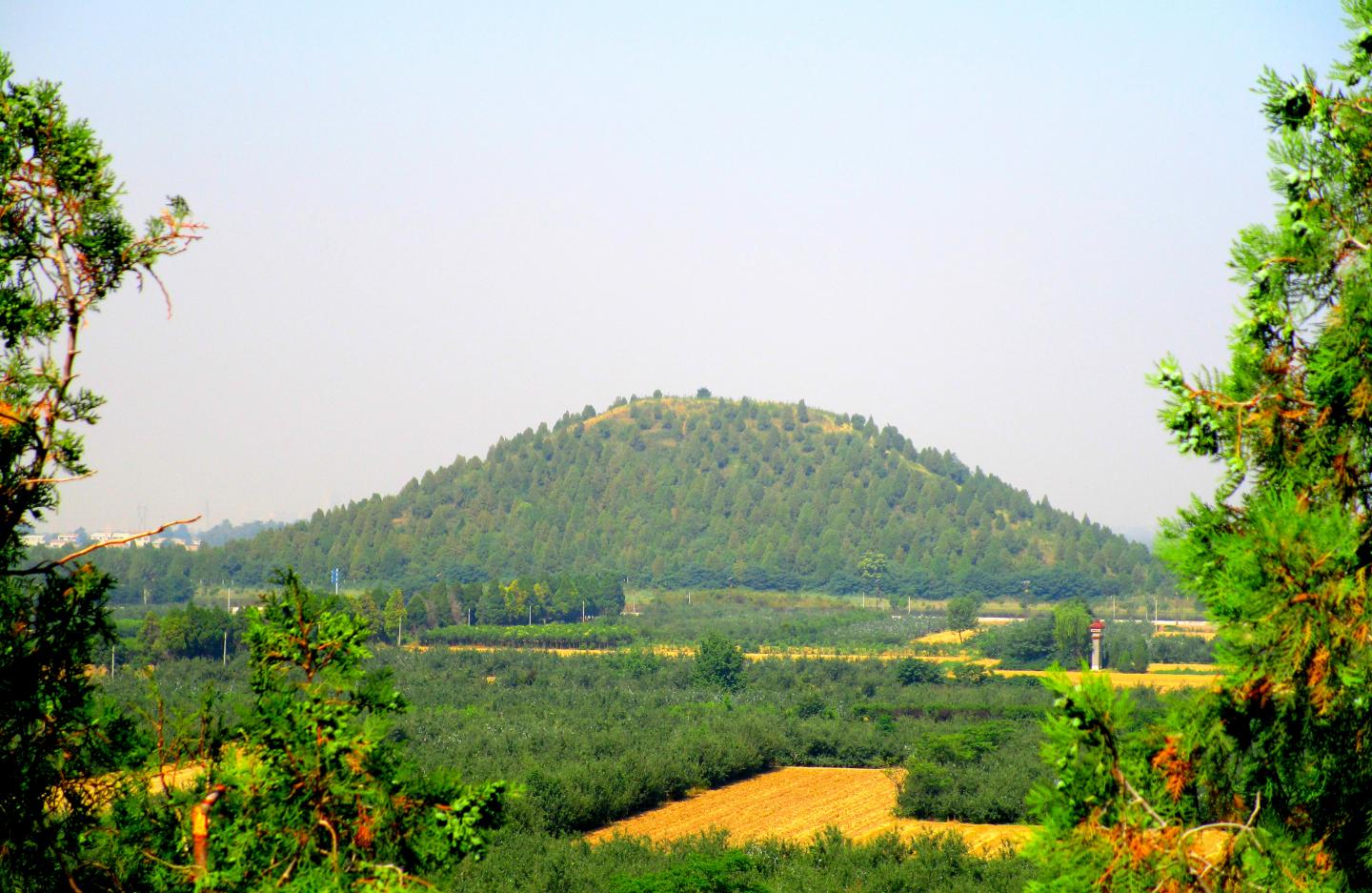
Mausoleum_Of_Emperor_Wu_Of_Han_Maoling.
Prepare to be captivated by the serene beauty of Maoling, where the echoes of the past resonate through the ages. Whether you are a history enthusiast, a casual traveler, or simply seeking to understand the depths of Chinese culture, a visit to the Mausoleum of Emperor Wu of Han promises an enriching experience that will linger long after you leave its hallowed grounds.
The Rich History and Legends of Mausoleum Of Emperor Wu Of Han Maoling
The Mausoleum of Emperor Wu of Han, known as Maoling (汉武帝茂陵), stands as a monumental testament to one of China’s most illustrious dynasties and its most celebrated emperor, Liu Che, or Emperor Wu (141-87 BC). Nestled in the scenic landscape of Shaanxi Province, this grand burial site is not only an archaeological treasure but also a vibrant canvas painted with tales of power, ambition, and legacy.
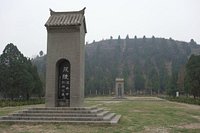
Mausoleum_Of_Emperor_Wu_Of_Han_Maoling.
A Legacy of Power
Emperor Wu of Han, ascending the throne at the tender age of 15, transformed the Han Dynasty into a formidable empire. His reign is marked by significant military expansions, cultural flourishing, and the establishment of the Silk Road, which facilitated trade and cultural exchange between the East and West. Maoling, constructed shortly after his death, reflects the emperor’s ambition and the grandeur of the Han Dynasty.
The mausoleum itself is a sprawling complex, covering over 100 square kilometers, making it the largest imperial tomb in China. The main tomb, which is still largely unexcavated, is designed in a pyramid shape, symbolizing the emperor’s earthly power and divine connection. According to historical texts, it is believed that the tomb houses numerous treasures, including gold, silver, and artifacts, meant to accompany the emperor in the afterlife.
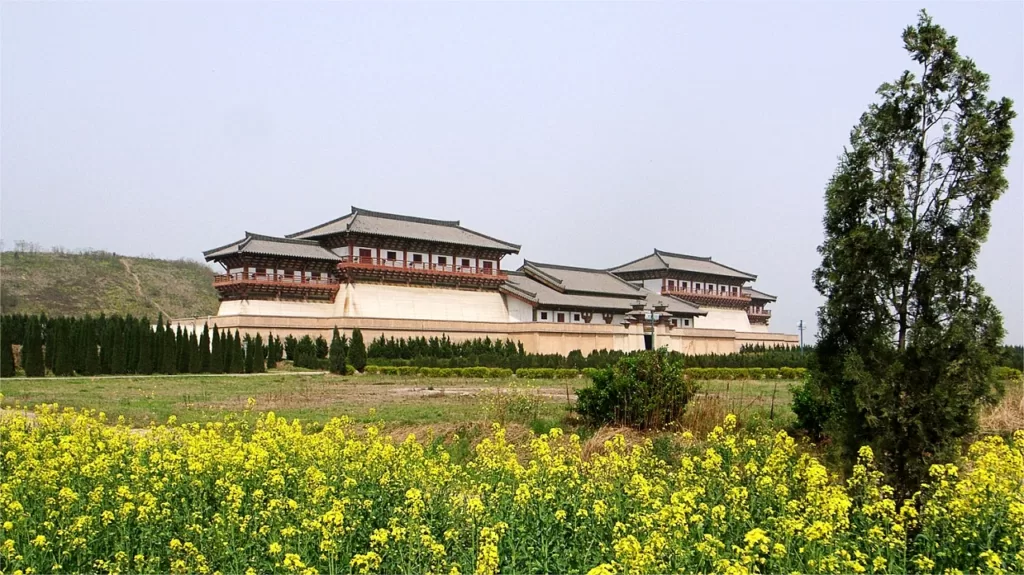
Mausoleum_Of_Emperor_Wu_Of_Han_Maoling.
The Legend of General Huo Qubing
One of the most poignant legends associated with Maoling is that of General Huo Qubing, a key military leader during Emperor Wu’s reign. Huo, celebrated for his bravery and strategic prowess, played a crucial role in defeating the Xiongnu nomads, securing the northern borders of the Han Empire. His untimely death at just 24 years of age deeply affected Emperor Wu, who mourned the loss of his beloved general profoundly.
The general’s tomb lies adjacent to that of Emperor Wu, a testament to their close relationship. Local legends tell of the emperor’s unwavering loyalty to Huo, even in death, as he ensured that Huo’s final resting place would be worthy of his heroism. Visitors often find themselves moved by the emotional weight of this bond, reflecting the deep respect for loyalty and valor that permeates Chinese culture.
Architectural Splendor and Artifacts
The mausoleum complex is adorned with stone sculptures, including the famous “Horse Ready to Leap,” which captures the essence of Han artistry and the importance of cavalry in the emperor’s military campaigns. As you wander through the site, you’ll encounter various artifacts that have been unearthed from the mausoleum, showcasing the rich craftsmanship of the Han era. These relics provide insight into the daily lives, beliefs, and artistic expressions of that time.
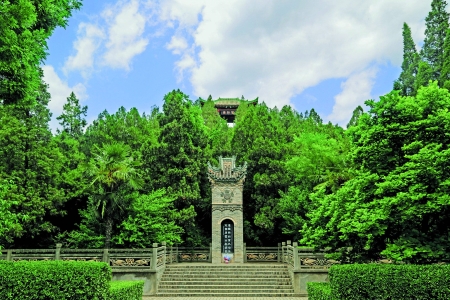
Mausoleum_Of_Emperor_Wu_Of_Han_Maoling.
Visiting Maoling
While the mausoleum is slightly off the beaten path, its serene environment and historical significance make it a worthwhile destination for travelers. The journey to Maoling is often described as a pilgrimage for history enthusiasts, offering a chance to connect with the past amidst beautiful landscapes. It is advisable to consider joining a local guided tour to navigate transportation options and enhance your experience with knowledgeable insights about the site’s rich history.
Conclusion
The Mausoleum of Emperor Wu of Han is not merely a tomb; it is a narrative woven into the very fabric of Chinese history. The legends of Emperor Wu and General Huo Qubing echo through the ages, reminding visitors of the values of loyalty, ambition, and the pursuit of greatness. As you stand before the impressive structure of Maoling, you are not just witnessing a relic of the past, but a living story that continues to inspire wonder and admiration.
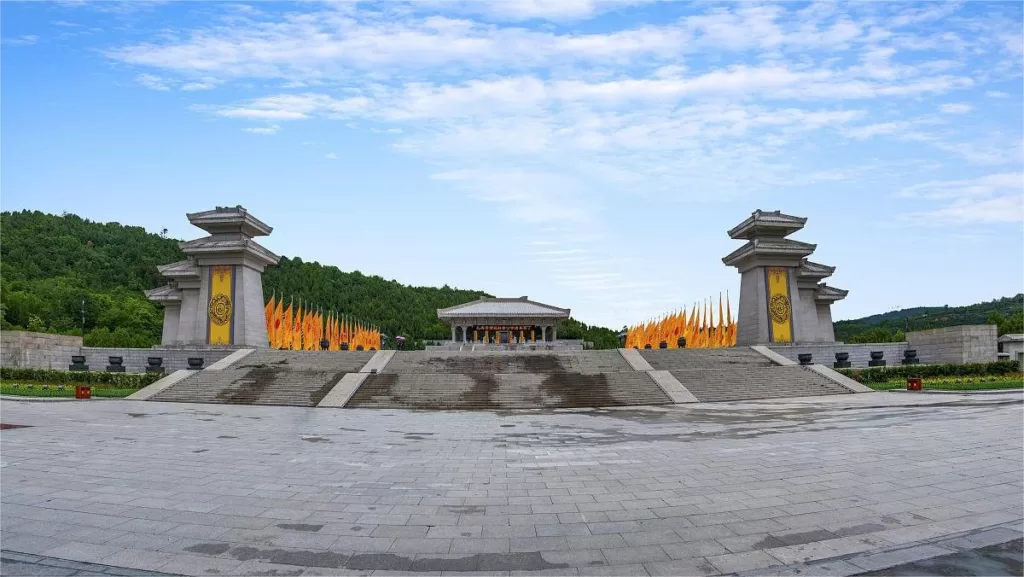
Mausoleum_Of_Emperor_Wu_Of_Han_Maoling.
Main Highlights: What You Absolutely Can’t Miss
Discover the Mausoleum of Emperor Wu of Han Maoling
Visiting the Mausoleum of Emperor Wu of Han, known as Maoling, is an essential journey for anyone with a passion for Chinese history and culture. This grand necropolis, the resting place of one of China’s most illustrious emperors, offers a deep dive into the Han dynasty’s rich past. Here are the highlights you absolutely cannot miss when exploring this magnificent site.
1. The Tomb Itself
The centerpiece of the Maoling complex is the tomb of Emperor Wu (Wudi), who reigned from 141 to 87 BC. As you approach the site, the scale of the tomb is breathtaking; it is one of the largest and most impressive mausoleums in China. The burial mound rises majestically, flanked by lush greenery that enhances its grandeur. For a full experience, take the time to climb to the top of the tomb. From this vantage point, you can enjoy a panoramic view of the surrounding hills and the ancient burial grounds that are scattered throughout the area.
2. Huo Qubing Mausoleum
Just a stone’s throw from Emperor Wu’s tomb lies the mausoleum of his beloved general, Huo Qubing. Known for his military prowess at a young age, Huo died at just 24. His mausoleum is a poignant reminder of their close relationship, providing insights into the personal connections that shaped historical events. The site also features a smaller burial mound, making it a place of reflection on loyalty and sacrifice.

Mausoleum_Of_Emperor_Wu_Of_Han_Maoling.
3. Historical Relics Museum
Don’t miss the onsite museum, which houses a fascinating collection of artifacts unearthed from the mausoleum. Here, you can delve deeper into the historical context of the Han dynasty, view pottery, weapons, and other relics that speak volumes about the culture and daily life during Emperor Wu’s reign. The museum is a treasure trove for history enthusiasts and offers a chance to see the craftsmanship of ancient artisans.
4. Stone Sculptures and Statues
As you wander through the grounds, keep an eye out for the 16 stone sculptures that adorn the area. Among these is the famous statue known as “Horse Ready to Leap.” This striking piece is a tribute to the equestrian skills of the time and symbolizes the strength and majesty of the Han military. The sculptures add an artistic flair to the historical landscape, allowing visitors to appreciate both the artistic and cultural dimensions of the period.
5. Scenic Trails and Natural Beauty
The Maoling complex is not just about history; it is also a place of natural beauty. The scenic walking trails meander through gardens and past ponds, making for a peaceful stroll. Along these paths, you can observe local wildlife and enjoy the serene atmosphere that envelops this historical site. Make sure to take a moment to relax by the circular pond, where you can feed koi fish and enjoy the tranquility of your surroundings.

Mausoleum_Of_Emperor_Wu_Of_Han_Maoling.
6. Guided Tours
For a richer understanding of the site, consider joining a guided tour. Local guides are knowledgeable and can provide context that enhances your visit. They can share anecdotes about Emperor Wu, his reign, and the significance of various monuments within the mausoleum complex. This is particularly helpful for international travelers who may not be familiar with the intricacies of Han dynasty history.
7. Practical Tips for Visiting
- Transportation: The mausoleum is a short drive from Xi’an, but be aware that it is somewhat remote. Joining a local tour can alleviate concerns about transportation and ensure a smoother visit.
- Best Time to Visit: Early morning or late afternoon is ideal for avoiding crowds and enjoying the site in a more peaceful setting.
- Entrance Fee: The ticket price is typically around 50 RMB, which provides access to the main mausoleum and museum.
The Mausoleum of Emperor Wu of Han Maoling stands as a testament to the grandeur of China’s imperial past. With its rich history, stunning landscapes, and invaluable relics, it is a destination that promises to leave visitors with a deeper appreciation of the Han dynasty’s impact on Chinese civilization.
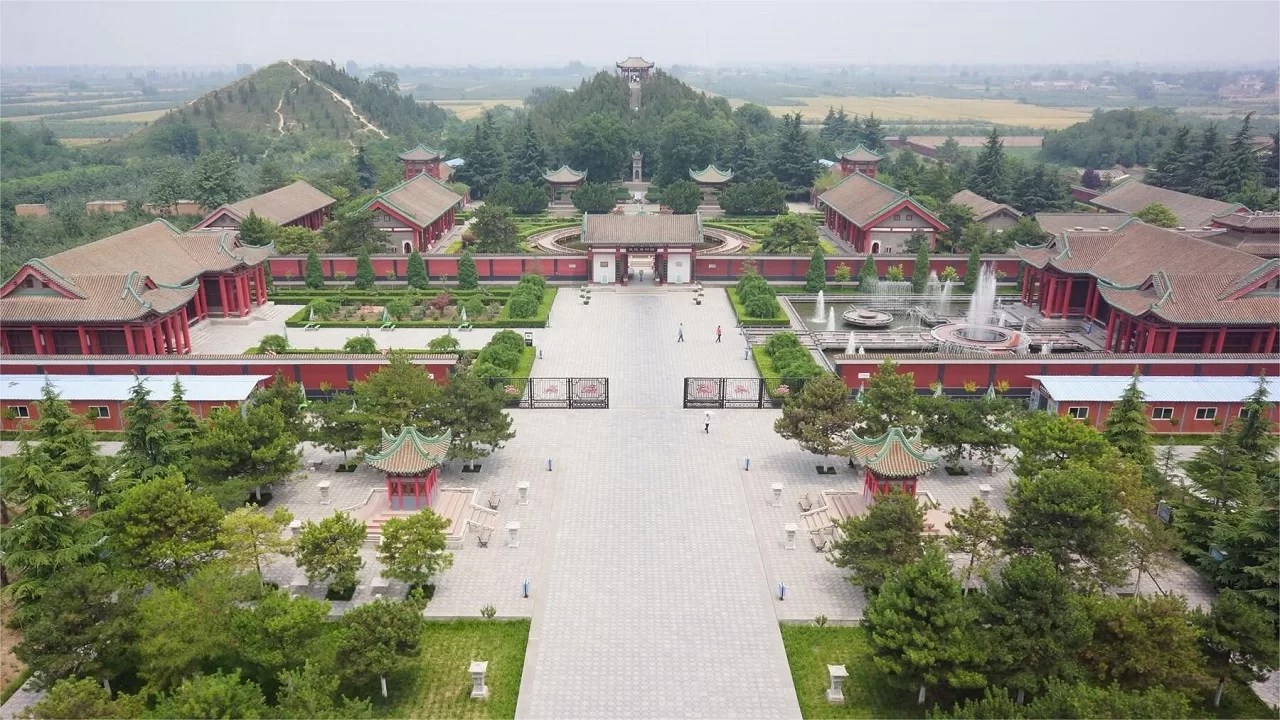
Mausoleum_Of_Emperor_Wu_Of_Han_Maoling.
Planning Your Visit: A Practical Guide
Preparing for Your Visit to the Mausoleum of Emperor Wu of Han (Maoling)
Visiting the Mausoleum of Emperor Wu of Han, also known as Maoling, offers a unique glimpse into China’s rich history and the legacy of one of its most renowned emperors. To ensure you make the most of your visit, here’s a practical guide to help you navigate your journey.
Getting There
The Maoling Mausoleum is located in Maoling Village, Nanwei Town, approximately a 40-minute drive from the bustling city of Xi’an. While public transport options may be limited, you have several convenient choices:
- Private Car or Taxi: The most direct way to reach the mausoleum. Be prepared for a scenic drive through the countryside.
- Ride-Hailing Apps: Services like Didi (China’s version of Uber) can be used, though it’s recommended to schedule your return in advance, as availability can be sporadic.
- Local Tours: Joining a local day tour can provide a hassle-free experience, often including transportation and a knowledgeable guide.
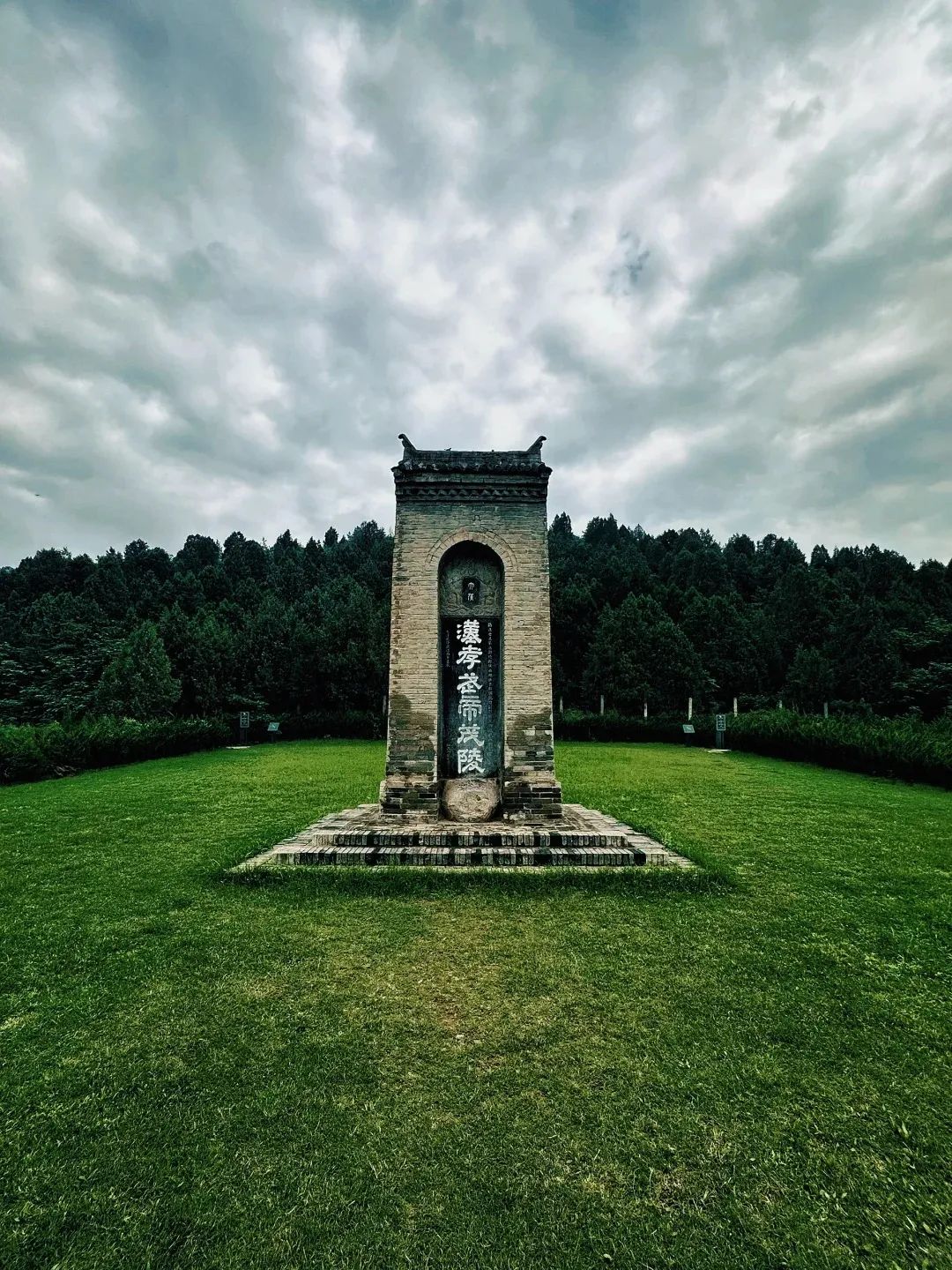
Mausoleum_Of_Emperor_Wu_Of_Han_Maoling.
Opening Hours
The mausoleum is open daily from 8:00 AM to 5:30 PM, giving you ample time to explore. Arriving early can help you avoid crowds and allow you to fully appreciate the serene environment.
Admission Fees
The entrance fee is typically around 50 RMB (approximately $7), which grants you access to the mausoleum complex, including the museums, gardens, and various historical sites within the area. Bring cash, as some smaller vendors may not accept cards.
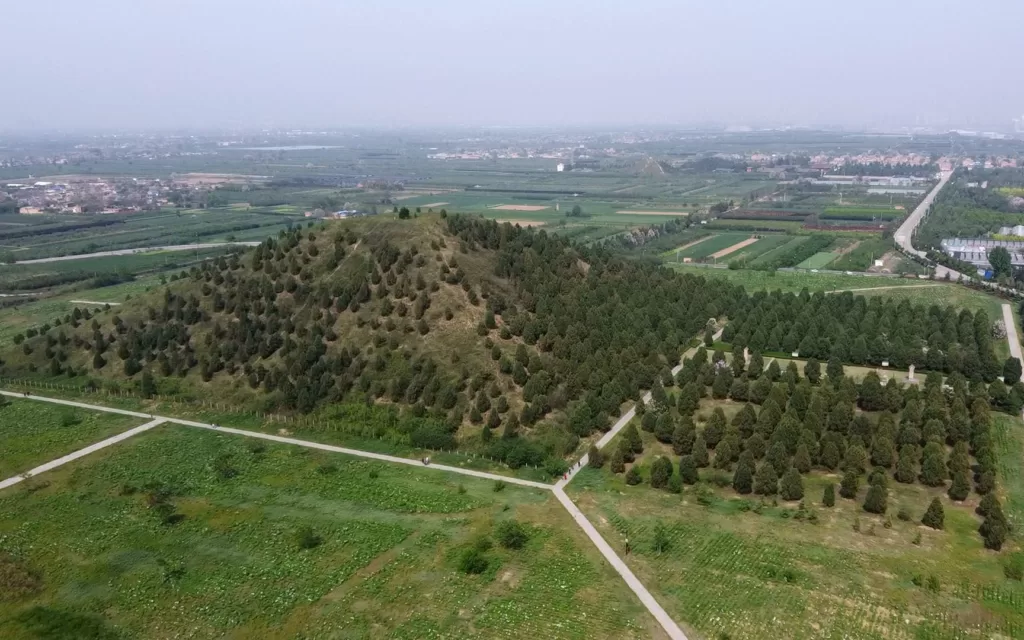
Mausoleum_Of_Emperor_Wu_Of_Han_Maoling.
What to Expect
-
Historical Significance: As the burial site of Emperor Wu, one of the greatest leaders of the Han Dynasty, the mausoleum is not only a resting place but also a testament to ancient Chinese civilization. Here, you can delve into the narratives of Emperor Wu’s life, his military conquests, and his influential general, Huo Qubing.
-
Scenic Surroundings: The site is beautifully landscaped, featuring gardens, pagodas, and a serene pond where you can feed koi fish. A walk through the grounds takes you past impressive stone sculptures, including the famous “Horse Ready to Leap.”
-
Educational Experience: The on-site museum houses artifacts unearthed from the mausoleum, offering deeper insights into the burial customs and daily life during the Han Dynasty. Consider hiring a guide to enrich your understanding of the exhibits.
Tips for a Smooth Visit
- Dress Comfortably: Wear comfortable shoes, as the complex involves a fair amount of walking, including some steep areas leading up to the tombs.
- Consider Timing: To enhance your experience, try to visit during weekdays when the site is less crowded. Early mornings or late afternoons can provide a more tranquil atmosphere.
- Plan for Transportation: Given the mausoleum’s remote location, it’s wise to plan your return journey in advance. If you’re not on a tour, ensure you have a reliable means of transportation organized beforehand.
- Combine Visits: The mausoleum is part of a region rich in historical sites. Consider pairing your visit with nearby attractions such as the Tomb of Emperor Wudi and the Huo Qubing Tomb for a fuller exploration of Han history.
Nearby Amenities
While the mausoleum itself is an awe-inspiring site, nearby areas offer several dining and shopping options. Be sure to check out local eateries for authentic Chinese cuisine, and don’t hesitate to pick up souvenirs to commemorate your visit.

Mausoleum_Of_Emperor_Wu_Of_Han_Maoling.
Conclusion
The Mausoleum of Emperor Wu of Han is a must-see for anyone interested in China’s historical tapestry. With careful planning, you can immerse yourself in the grandeur of the Han Dynasty, making your visit not only memorable but also enriching. Prepare to be captivated by the stories of the past as you walk through this significant cultural landmark.
Tickets: Prices, Booking, and Tips
When planning a visit to the Mausoleum of Emperor Wu of Han, also known as Maoling (汉武帝茂陵), knowing the ticketing details and practical tips can greatly enhance your experience. This awe-inspiring site, located just a short drive from Xi’an, is a treasure trove of Chinese history, offering a glimpse into the grandeur of the Han Dynasty.
Ticket Prices
- Admission Fee: The entrance ticket to the Maoling Mausoleum is approximately 50 RMB (around $8 USD). This fee provides you access to the expansive mausoleum complex, including various tombs, museums, and scenic spots.
- Discounts: Students and seniors may be eligible for reduced ticket prices, so be sure to bring valid identification if you qualify.
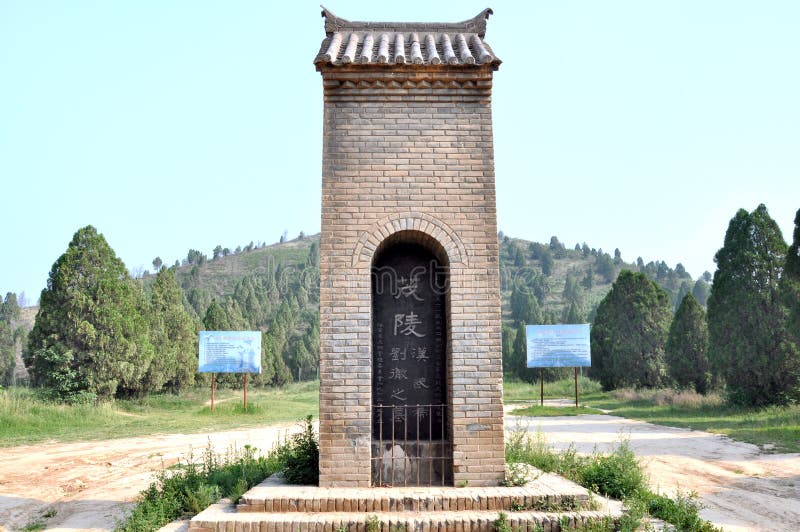
Mausoleum_Of_Emperor_Wu_Of_Han_Maoling.
Booking Information
- Online Reservations: Tickets can often be purchased online through various travel platforms and local tour operators. Booking in advance is recommended, especially during peak tourist seasons, to ensure availability.
- On-site Purchase: Tickets are also available for purchase at the entrance. However, be prepared for potential queues, particularly during weekends and holidays.
Opening Hours
- Daily Schedule: The site is open from 8:00 AM to 5:30 PM. It’s advisable to arrive early to fully explore the mausoleum without the crowds.
Transportation Tips
- Getting There: While the mausoleum is relatively close to Xi’an, public transportation can be limited. Consider joining a local day tour, which often includes transportation, to avoid any transportation hassles.
- Return Transportation: If you opt to visit independently, be aware that ride-hailing services like Didi may have limited availability in the area. Planning your return trip ahead of time or checking with the visitor center for shuttle options is a wise strategy.
Visitor Recommendations
- Guided Tours: For a deeper understanding of the site’s historical significance, consider hiring a local guide or joining a guided tour. This will enrich your visit with stories about Emperor Wu and his reign.
- Combine Visits: The Maoling Mausoleum can be combined with visits to nearby attractions, such as the Tomb of Huo Qubing, to make the most of your travel itinerary.
Essential Tips
- Dress Comfortably: Wear comfortable shoes, as exploring the vast grounds involves a fair amount of walking.
- Stay Hydrated: Bring water, especially during the warmer months, to stay refreshed as you explore the site.
- Research Before You Go: Familiarizing yourself with the history of Emperor Wu and the Han Dynasty can enhance your appreciation of the mausoleum’s cultural significance.
Visiting the Mausoleum of Emperor Wu of Han is more than just a sightseeing trip; it’s an immersive journey into China’s rich historical tapestry. With these ticketing and travel insights, you’re all set for a memorable experience!
How to Get There: A Complete Transportation Guide
Approaching the Majestic Maoling Mausoleum
Visiting the Mausoleum of Emperor Wu of Han, nestled in the scenic landscape of Xingping, is a journey back in time to one of China’s most illustrious historical figures. To ensure your visit is seamless and enjoyable, here’s a comprehensive guide on how to get there, covering various transportation options.
Getting to Xingping
-
By Air:
The nearest major airport is Xi’an Xianyang International Airport (XIY), located approximately 50 kilometers from the mausoleum. International flights connect this airport to many global destinations. -
By Train:
Xi’an also serves as a hub for high-speed trains. If you’re coming from cities like Beijing or Shanghai, consider taking a high-speed train to Xi’an North Railway Station. From there, you can opt for local transportation to Xingping. -
By Bus:
Long-distance buses frequently depart from Xi’an’s Xianyang Airport or the Xi’an Bus Station. Look for buses heading to Xingping or Nanwei Town, where the mausoleum is located. The bus ride typically takes about an hour.
Local Transportation Options
Once in Xingping, you have several options to reach the mausoleum:
-
Taxi Services:
Taxis are readily available in Xingping. A ride from the town center to the mausoleum typically costs around 30-50 RMB and takes about 20-30 minutes. Ensure to have your destination written in Chinese to facilitate communication. -
Ride-Hailing Apps:
If you prefer using a smartphone, apps like Didi (the Chinese equivalent of Uber) are operational in the area. Keep in mind, however, that availability may be limited during peak hours, and you may need to wait longer than expected. -
Guided Tours:
Joining a local tour is highly recommended, especially for international travelers. Many tour operators in Xi’an offer day trips that include transportation to the mausoleum. This option not only guarantees a ride but also enriches your experience with knowledgeable guides who can provide historical context. -
Public Transportation:
If you’re feeling adventurous, public buses from Xingping’s main bus station can get you close to the mausoleum. However, this option may require additional walking and is less convenient for those unfamiliar with the area.
Tips for Your Visit
-
Plan Ahead: Due to the mausoleum’s remote location, it’s wise to have your return transportation arranged beforehand. Many travelers have reported difficulty in finding a ride back after visiting, especially in the late afternoon.
-
Combine Trips: Consider visiting nearby attractions, such as the Tomb of Huo Qubing, to make the most of your trip. This can often be done through guided tours that cover multiple sites.
-
Timing: The mausoleum is open daily from 8:00 AM to 5:30 PM. Arriving early can help you avoid crowds and heat, especially during the summer months.
Conclusion
With its rich history and stunning surroundings, the Mausoleum of Emperor Wu of Han is a must-visit for any history enthusiast. By planning your transportation ahead of time, you can ensure a smooth and enriching experience, allowing you to focus on soaking in the grandeur of this significant site. Enjoy your journey into the heart of ancient China!
Local Cuisine and Accommodation Nearby
Discovering Local Flavors and Comfort Near the Mausoleum of Emperor Wu of Han
Visiting the Mausoleum of Emperor Wu of Han, nestled in the tranquil surroundings of Xingping, is not just a journey through history but also an opportunity to explore the rich culinary traditions and cozy accommodations that the region has to offer. Whether you’re looking for a hearty meal after a day of exploration or a comfortable place to rest, this area has something for every traveler.
Local Cuisine to Savor
-
Xingping Roast Duck
Known for its crispy skin and succulent meat, this local delicacy is a must-try. Several restaurants around Xingping serve this dish with traditional dipping sauces and fresh vegetables. -
Biang Biang Noodles
These wide, hand-pulled noodles are a specialty of Shaanxi province. They are typically served with a variety of toppings, including spicy chili oil, garlic, and vegetables. A visit to a local noodle shop will give you an authentic taste of this beloved dish. -
Shaanxi Lamb Kebabs
Perfect for a quick snack or a satisfying meal, these skewers are grilled to perfection and seasoned with a blend of spices. Many street vendors offer freshly made kebabs that are both affordable and delicious. -
Yang Rou Pao Mo (Lamb Stew with Bread)
This hearty dish consists of lamb stew served with crumbled bread, making it a comforting option for lunch or dinner. It is particularly popular in colder months. -
Local Teas and Herbal Infusions
To complement your meals, don’t miss the chance to try locally sourced teas. Many restaurants offer traditional Chinese tea services that highlight the region’s herbal blends.
Accommodation Options Nearby
-
Xingping Hotel
Located just a short drive from the mausoleum, this hotel offers comfortable rooms with modern amenities. Guests can enjoy a peaceful stay while being close to local attractions. -
Qinghe Business Hotel
For travelers seeking a more budget-friendly option, this hotel provides clean and simple accommodations. It is conveniently located near public transportation, making it easy to explore the surrounding areas. -
Maoling Scenic Spot Hotel
Situated within the scenic area, this hotel offers stunning views of the mausoleum and surrounding hills. It combines comfort with a unique cultural experience, featuring traditional decor and local cuisine. -
Xi’an Jinrong Hotel
A bit further away, this hotel boasts a blend of contemporary style and traditional elements. It offers a range of facilities, including a restaurant that serves both local and international dishes. -
Homestays in Local Villages
For an immersive experience, consider staying in a local homestay. These accommodations provide a unique opportunity to connect with local families and experience authentic Shaanxi culture firsthand.
Travel Tips
- Transportation: Due to the mausoleum’s remote location, it’s advisable to arrange transportation in advance or join a local tour group.
- Dining Hours: Many restaurants may close by 9 PM, so plan your meals accordingly to ensure you can enjoy the local cuisine.
- Cultural Etiquette: When dining, it’s customary to share dishes, so feel free to order a variety to sample different flavors.
By immersing yourself in the local cuisine and finding a comfortable place to stay, your visit to the Mausoleum of Emperor Wu of Han will be enriched, offering a deeper understanding of the culture and history of this fascinating region.
Frequently Asked Questions
Frequently Asked Questions about the Mausoleum of Emperor Wu of Han (Maoling)
1. What is the Mausoleum of Emperor Wu of Han?
The Mausoleum of Emperor Wu of Han, known as Maoling, is the burial site of one of China’s greatest emperors, Liu Che (also known as Emperor Wu). It is located about 85 kilometers from Xi’an and is part of a larger complex that includes various tombs, gardens, and museums showcasing Han Dynasty history.
2. How do I get to the Mausoleum from Xi’an?
The mausoleum is a short drive from Xi’an. While public transportation options are limited, visitors can book local day tours that include transportation, or use ride-hailing apps like Didi. However, it is advisable to plan your return trip in advance, as taxis can be scarce in the area.
3. What are the opening hours?
The mausoleum is open daily from 8:00 AM to 5:30 PM. It is recommended to arrive early to fully explore the site and avoid the crowds.
4. What should I expect to see during my visit?
Visitors can explore the expansive grounds featuring the emperor’s tomb, the mausoleum of his general Huo Qubing, and several stone sculptures, including the famous “Horse Ready to Leap.” The site also has gardens, pagodas, and a museum housing artifacts from the Han Dynasty.
5. Is there an entrance fee?
Yes, there is an entrance fee to access the mausoleum and its associated sites. As of the latest information, the ticket price is approximately 50 RMB. It’s advisable to check for any changes in pricing before your visit.
6. Are there guided tours available?
Yes, guided tours are available at the mausoleum. Hiring a local guide can enhance your experience by providing in-depth historical context and insights about the site and its significance during the Han Dynasty.
7. What amenities are available on-site?
The mausoleum complex features several amenities, including restrooms, a visitor center, and souvenir shops. There are also food options available, though it may be wise to bring snacks and water, especially if you plan to spend a full day exploring.
8. Can I combine my visit to Maoling with other attractions?
Absolutely! The mausoleum is conveniently located near several other historical sites, including the Tomb of Huo Qubing and the Hanyangling Mausoleum. Consider planning a day tour that includes these locations to enrich your historical experience.
Final Thoughts on Your Trip
As you prepare to conclude your journey to the Mausoleum of Emperor Wu of Han, take a moment to reflect on the profound history that envelops this remarkable site. Nestled in the serene landscape of Xingping, the mausoleum stands not just as a final resting place for one of China’s greatest emperors, but also as a testament to the rich tapestry of Han Dynasty culture and legacy.
Embrace the Historical Significance
Visiting Maoling is more than just a sightseeing trip; it’s an opportunity to immerse yourself in the stories of power, ambition, and sacrifice that shaped ancient China. As you walk through the expansive grounds, consider the life of Emperor Wu, whose reign marked a golden age of expansion and cultural flourishing. Pay homage to the tragic figure of General Huo Qubing, whose loyalty and valor resonate through the ages.
Plan for a Rewarding Visit
To make the most of your experience, consider joining a local tour. This can alleviate transportation hassles and enhance your understanding of the site’s historical context. The mausoleum’s remote location may pose a challenge for independent travelers, so planning ahead can ensure a smooth and enriching visit.
Reflect on Your Journey
As you leave the mausoleum, take a moment to appreciate the quiet beauty of the surrounding landscape. The gentle hills and lush greenery provide a picturesque backdrop that invites contemplation. This is a place where history breathes, and the echoes of the past linger in the air.
Embracing the spirit of exploration, remember that your visit to the Mausoleum of Emperor Wu of Han is just one chapter in the grand narrative of China’s history. As you continue your travels, carry forward the lessons learned and the stories uncovered, enriching your understanding of this vibrant civilization.
In closing, may your journey through China be filled with inspiration and discovery, as you delve deeper into the heart of a country that has shaped the world in myriad ways. Safe travels!